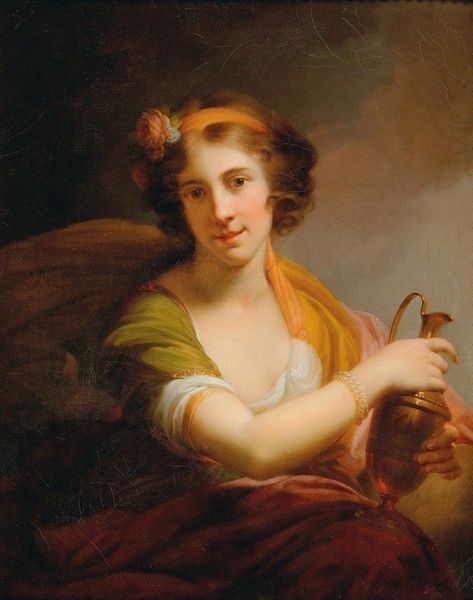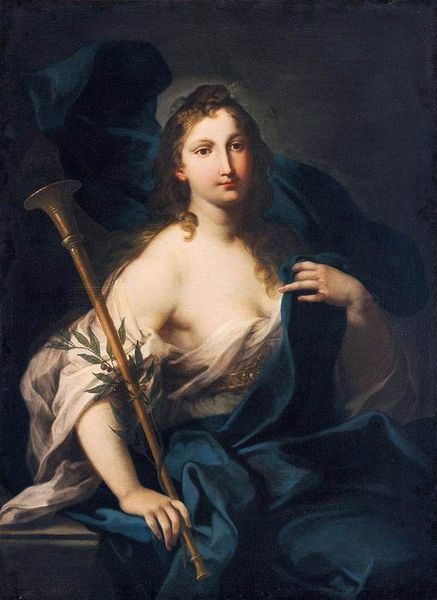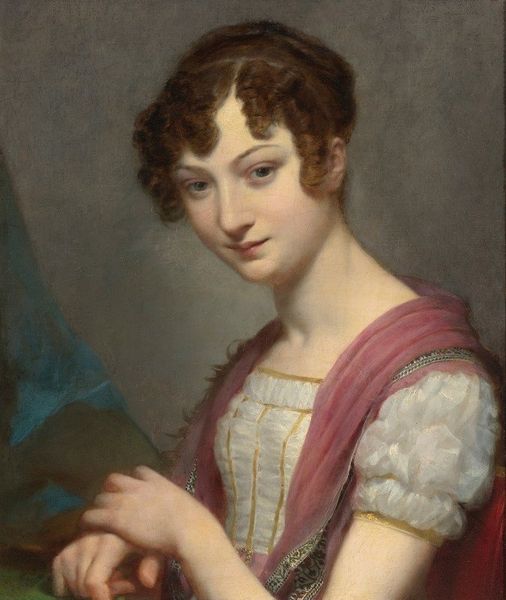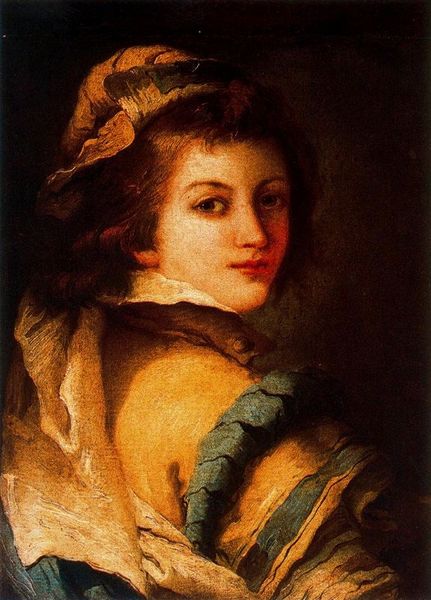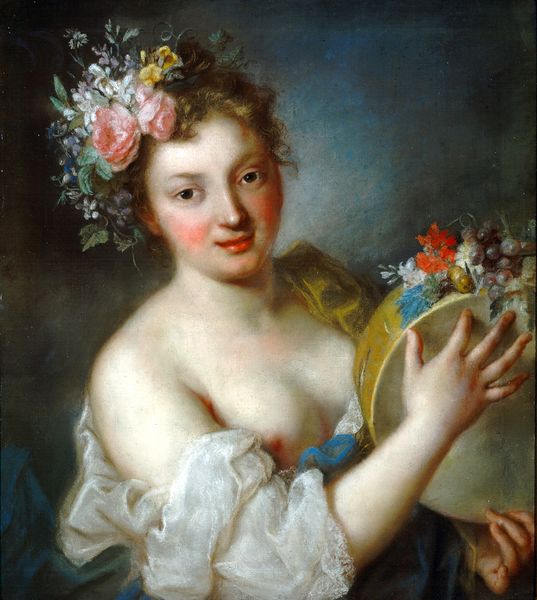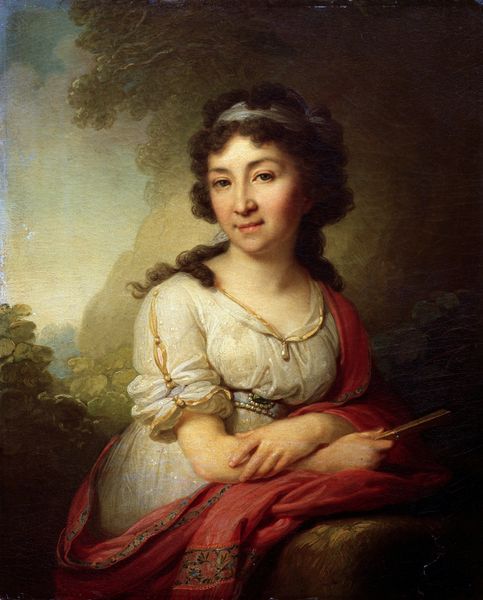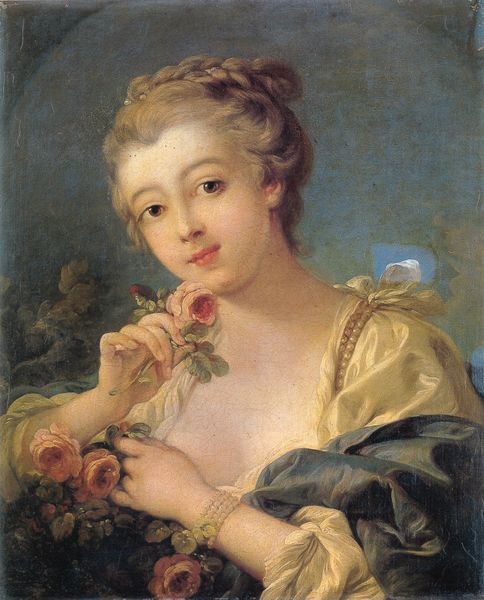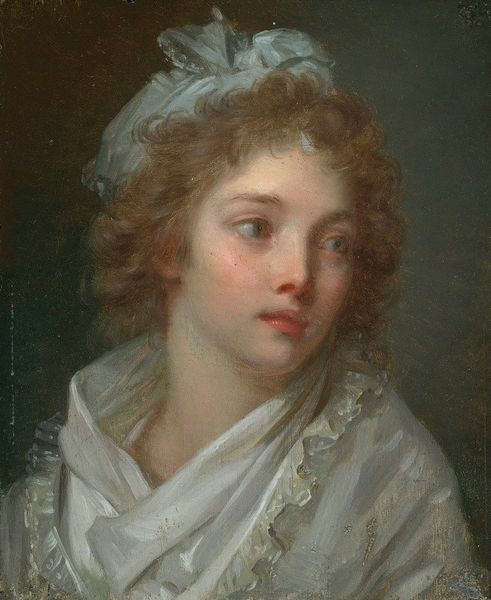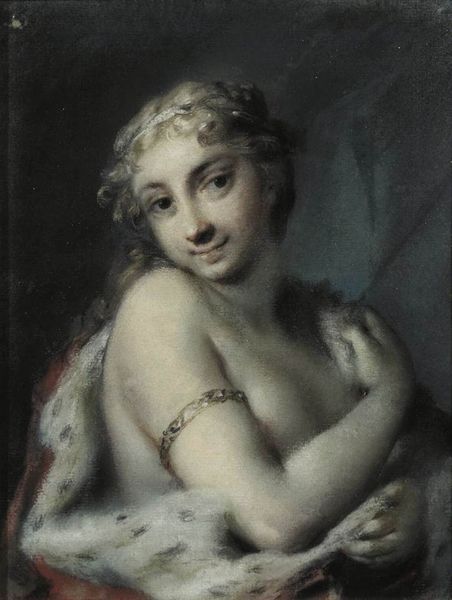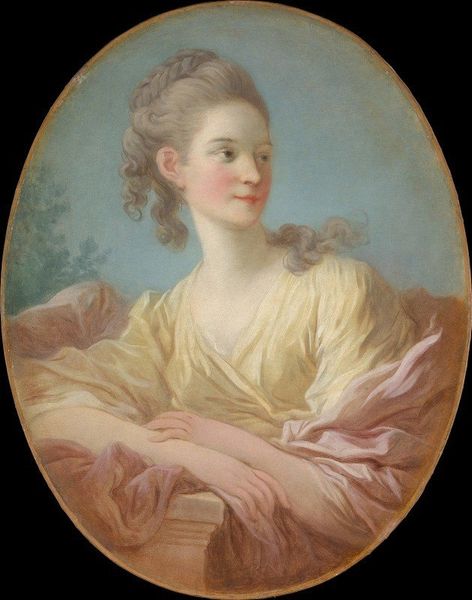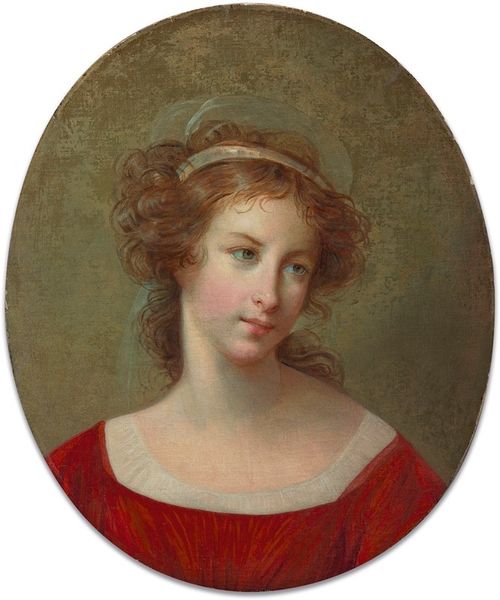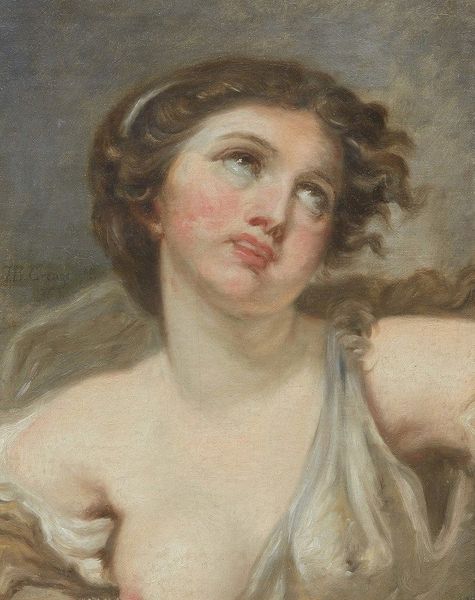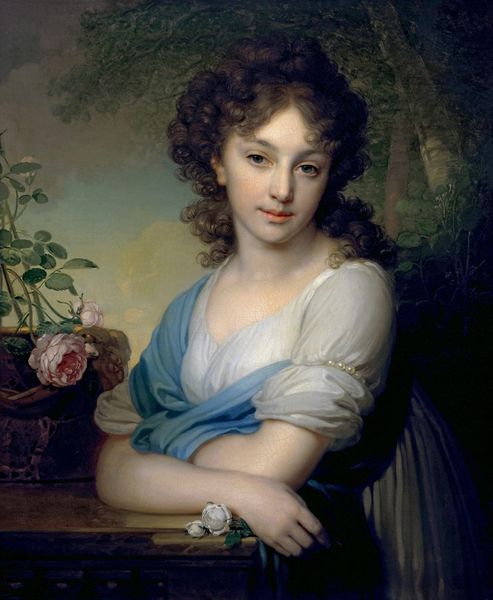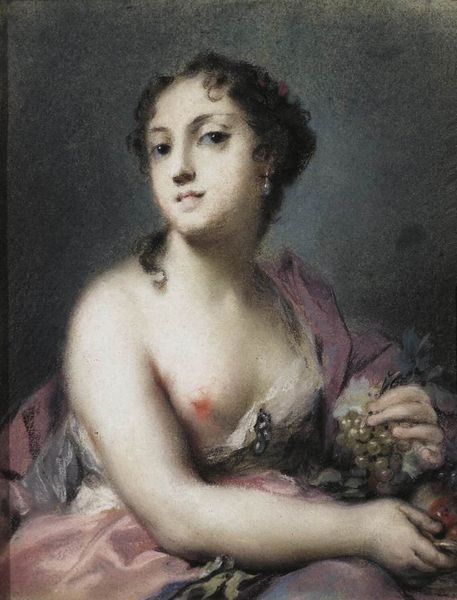
painting, oil-paint
#
portrait
#
painting
#
oil-paint
#
romanticism
#
academic-art
#
nude
Copyright: Public Domain: Artvee
Curator: Allow me to introduce Johann Baptist von Lampi the Elder’s oil on canvas from 1800, "Portrait of Elena Aleksandrovna Naryshkina". Editor: It has an appealing, slightly melancholic aura. The pale skin tones contrasting with the vibrant red drapery create a really captivating focal point. Curator: Indeed. Consider how Lampi utilizes the materials—oil paint meticulously layered to achieve those soft gradations in her skin, the almost luminous quality. The context is vital; Lampi was a highly sought-after portraitist, catering to the elite. How does this piece uphold, or perhaps challenge, that societal function? Editor: The composition immediately directs my attention towards her eyes, reflecting a pensive mood. The gentle curves of her arm and the way her fingers delicately touch the fabric lead my eyes across the pictorial plane. The artist clearly wants us to focus on these carefully arranged details, eliciting emotion from line, shape, and hue. Curator: And yet, there is also the issue of production and labor. Lampi's studio undoubtedly had assistants. To what extent did they contribute to the material construction of the piece? Where were the pigments sourced? The canvas? Understanding these facets brings us closer to a comprehensive grasp. It's not simply the image that matters but the network of manufacture, ownership, and display surrounding it. Editor: However, within the image itself, it also presents several fascinating structural oppositions. For instance, there’s the stark division between her refined face, the smooth textures and details versus the vagueness and imprecision that characterize the background landscape, resulting in an intriguing dichotomy. Curator: True, the artist likely employed conventional practices and skills, but to ignore these considerations undermines the painting’s essence as an object within a specific material and socio-economic reality. The very subject is draped only in a red shawl and bare-chested, representing an aristocratic fashion that also highlights their wealth and ease of access to material goods, which in turn shows off Lampi's capabilities as a painter. Editor: That is valid. But regardless of context and source, its aesthetic beauty and evocative arrangement still endures. A convergence, if you will, of artistic skill and inherent qualities. Curator: An insightful conclusion!
Comments
No comments
Be the first to comment and join the conversation on the ultimate creative platform.
